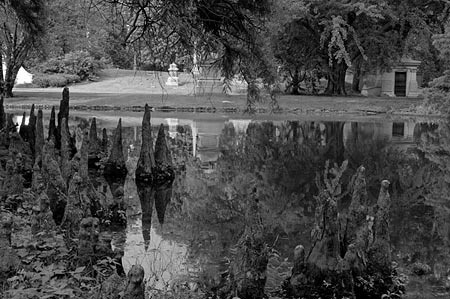
Spring Grove Cemetery and Arboretum
Cincinnati, Ohio
Baldcypress Grove Cincinnati, Ohio
history
During the 1830s and 1840s, the population of Cincinnati was heavily affected by the recurrence of the cholera epidemics that would later sweep the entire country. The crowded and sometimes unkempt appearance of many of the small church cemeteries in Cincinnati offered little comfort to bereaved families. In order to address the situation, members of the Cincinnati Horticultural Society formed a nonprofit cemetery association in 1844. They endeavored to find a location suitable for creating a picturesque, park-like institution; they sought a rural cemetery, contiguous to the city, yet remote enough not to be disturbed by expansion.
Traveling throughout the United States and Europe to visit cemeteries of outstanding reputation, the founders planned a cemetery that would equal the famed beauty of the Cemetery of Père-Lachaise in Paris, France. The founders of Spring Grove were also inspired by the pastoral setting of Mount Auburn in Cambridge, Massachusetts, this nation’s first rural cemetery (established in 1831). At the 1845 consecration ceremony, Spring Grove’s founders publicly proclaimed their hope that the natural setting of Spring Grove would be a contemplative atmosphere conducive to consolation, commemoration, and education.
